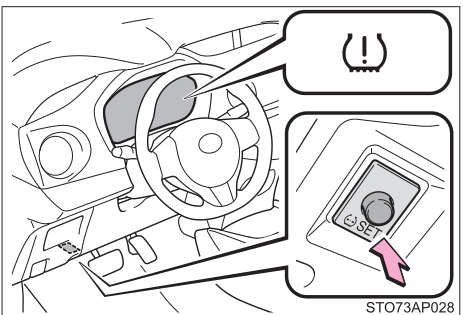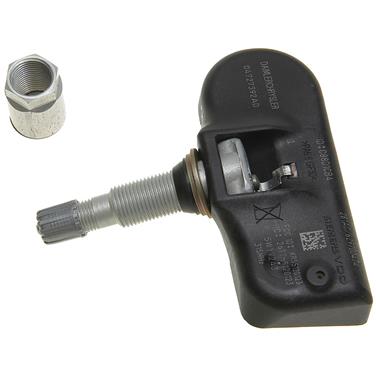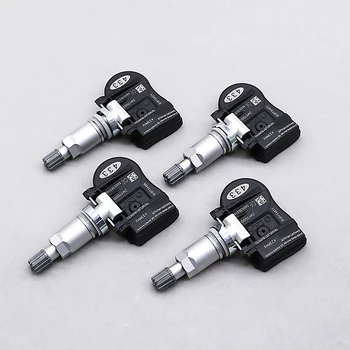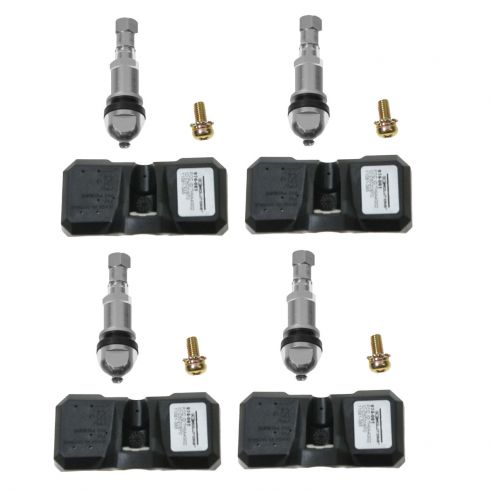The Chrysler 300 is a full-size sedan that was first introduced in 2004. It’s a popular choice for those who want a spacious and comfortable car that’s also stylish and luxurious. Many Chrysler 300 owners wonder where the TPMS reset button is located is in their cars, if you are one of them, this article is for you.
The TPMS reset button on a Chrysler 300 is located on the instrument panel, near the speedometer. To reset the TPMS, simply press and hold the button for about five seconds. The light on the button will flash to indicate that the system has been reset. If you’re having trouble finding the TPMS reset button on your Chrysler 300, consult your owner’s manual.
When you need to reset the TPMS on your Chrysler 300, follow these steps:
As we already mentioned, you can also consult your owner’s manual for more information on resetting the TPMS on your Chrysler 300.
The TPMS is a Tire Pressure Monitoring System that’s designed to keep track of your tires’ pressure levels. If one of your tires is low on air, the TPMS will warn you so that you can inflate it to the proper level. This helps to prevent flats and other tire-related problems.
The Tire Pressure Monitoring systems work in an interesting way. It uses sensors that are mounted on the tires to monitor their pressure.
The data from these sensors is then transmitted to the TPMS control unit. If one of your tires is low on air, the TPMS will warn you so that you can take action.
It’s important to keep an eye on your tire pressure levels, even if you have a TPMS. This is because the TPMS can only warn you about low tire pressure; it can’t do anything to fix the problem. That’s why it’s important to check your tires’ pressure levels regularly and inflate them as needed.
That’s why it’s important to check your tires’ pressure levels regularly and inflate them as needed.
Low tire pressure can lead to a number of problems.
When you keep running at low tire pressure, your tires will wear out prematurely. This is because the low tire pressure causes the tires to flex more than they should.
This extra flexing leads to cracks and other damage to the tire treads. over time, this damage can cause your tires to leak air or even fall apart completely.
Another problem that can be caused by low tire pressure is reduced fuel economy. This is because the low tire pressure makes your tires work harder, which causes your engine to use more fuel. In addition, the extra drag from the low-pressure tires can also reduce your fuel economy.
Low tire pressure can also make your car harder to handle. This is because the low-pressure tires provide less traction, which can make it difficult to stop or turn. In addition, low tire pressure can also cause your car to lose its balance, making it more likely to roll over in an accident.
In addition, low tire pressure can also cause your car to lose its balance, making it more likely to roll over in an accident.
Low tire pressure can also lead to high emissions. This is because the low-pressure tires cause your engine to work harder, which can lead to more emissions.
Finally, low tire pressure can also be a safety hazard. This is because low-pressure tires can make it more difficult to stop or turn, which can lead to accidents. In addition, low-pressure tires can also cause your car to roll over in an accident, which can be very dangerous.
For these reasons, it’s important to keep an eye on your tire pressure levels and inflate your tires as needed. Additionally, if you have a TPMS, be sure to reset it when you inflate your tires.
While it’s important to maintain proper tire pressure, it’s also important not to over-inflate your tires. An over-inflated tire can be just as dangerous as an under-inflated one.
An over-inflated tire is more likely to burst or blow out. Additionally, an over-inflated tire can cause your car to bounce down the road, which makes it more difficult to handle.
Like under-inflated tires, over-inflated tires also have an impact on fuel economy and emissions. When a tire is over-inflated, it has less contact with the road. This causes the engine to work harder to move the car, leading to a decrease in fuel efficiency and an increase in emissions.
When you have a TPMS, it’s important to keep an eye on the sensors. These sensors can wear out over time and may need to be replaced.
In case you notice that your TPMS light is turning on more frequently, or if it’s staying on longer than usual, it’s a good idea to have the system checked by a professional. They can test the sensors to see if they need to be replaced.
Similarly, if your TPMS light is coming on and there doesn’t seem to be any problem with your tires, the issue may be with the sensors. In this case, you’ll need to have the system checked and, if necessary, have the sensors replaced.
In this case, you’ll need to have the system checked and, if necessary, have the sensors replaced.
There are a few reasons why your TPMS light might be on even though your tires seem to be fine. One possibility is that the system needs to be reset. Another possibility is that the sensors need to be replaced.
TPMS sensors typically need to be replaced every five years or so. However, this can vary depending on the make and model of your vehicle.
Replacing TPMS sensors typically costs between $100 and $200. However, this can vary depending on the make and model of your vehicle.
If you don’t reset your TPMS after inflating your tires, you could end up with inaccurate readings. This could lead to problems like under-inflated or over-inflated tires, which can be dangerous.
The ideal tire pressure for your car depends on a variety of factors, including the make and model of your vehicle. You can typically find this information in your owner’s manual.
On average, most passenger cars have an ideal tire pressure of between 32 and 35 PSI. However, it’s always best to consult your owner’s manual to be sure.
Yes, in most cases, you can turn off TPMS sensors. However, it’s not recommended. These sensors are there for your safety and the safety of your passengers. Additionally, they can help improve fuel economy and reduce emissions.
Reprogramming a TPMS sensor typically requires a special tool. This tool can be purchased at most auto parts stores. Once you have the tool, you’ll need to follow the instructions in your owner’s manual to reprogram the sensor.
The TPMS sensor button on the Chrysler 300 is located on the dash, to the left of the steering wheel. It is a small, black button that says “Tire Pressure Monitoring System.” This button serves as a reset button for the system.
It is a small, black button that says “Tire Pressure Monitoring System.” This button serves as a reset button for the system.
If your TPMS light is on, it’s important to check your tires and make sure they are properly inflated. You may also need to reset the system or replace the sensors. Consult your owner’s manual for more information. Thanks for reading.
Here are other articles about Chrysler that you may enjoy:
Chrysler 200 & 300 – How to Open The Gas Tank and Cap
How To Reset A Chrysler Transmission Control Module
How To Unlock and Start a Chrysler Sebring Without a Key
Instruction on how to reset the TPMS of Chrysler Cars.
TPMS RESET INSTRUCTION 1
No special tools are required to perform this relearn procedure , however a properly formatted TPMS scan tool may expedite the relearn process .
Sensor Relearn Procedure without a Scan Tool:
1. Inflate all t ires to pressure listed on the placard.
2.Let the vehicle sit OFF for a minimum of 20 minutes
3. Drive the vehicle above 15 MPH for at least 10 minutes. The relearn may take from 10 – 35 minutes of driving . The vehicle will learn each sensor Id and turn the TPMS light off .
TPMS RESET INSTRUCTION 2
YOU NEED TPMS SCAN TOOL FOR THIS MODEL. Procedure using another Properly Formatted Scan Tool
Relearn Procedure:
1. Inflate all tires to the pre ssure listed on the placard.
2.Turn ignition to the ON position with the engine OFF (not the A CC position).
3.Press and release the MENU butto n on the EVIC until the message “Retrain Tire Sensor‐No” is displayed.
4. Press the STEP button to select YES.
5.Press the MENU button to start t he relearn process. The EVIC w ill display the message “Train Left Front Tire”.
6. Starting with the LF tire, use yo ur scan tool to scan each sens or in the following order: LF, RF, RR, LR (and fu ll size spare if equipped).
7.Once the EVIC display the message “Training Complete”, depress the STEP, C/T, RESET, or MENU, button, to exit the relearn procedure.
8. Turn the ignition to the OFF position.
TPMS RESET INSTRUCTION 3
Dealer Relearn Currently, only the Original Equi pment (OE) Dealership has the scan tool necessary to register new sensor IDs.
Tags: chrysler, reset, TPMS
You are the proud owner of a recent car, the joy of tactile devices, the integrated technologies should bring you a significant usability of your Chrysler 300, however, which is to say that the technology is talking about electricity, and, as we all, unfortunately, We know sometimes there are problems with the resolve. Today we will look at the tire pressure sensor and exactly how to reset the tire pressure sensor on the Chrysler 300 so that this indicator never appears on the dashboard again. To do this, we will divide our article into two parts: first, we will look at the typical circumstances when the tire pressure indicator light appears and the procedure to follow, and then the circumstances when the tire pressure indicator remains on despite the tires being inflated. so how to reset this tire pressure sensor on Chrysler 300.
To do this, we will divide our article into two parts: first, we will look at the typical circumstances when the tire pressure indicator light appears and the procedure to follow, and then the circumstances when the tire pressure indicator remains on despite the tires being inflated. so how to reset this tire pressure sensor on Chrysler 300.
First, we will concentrate on the classic method of resetting the tire sensor on the Chrysler 300, which, if it lights up, here are the main steps:

Now that you have tried the normal Chrysler 300 tire pressure sensor removal procedure, and this didn't work, we'll move on to the second solution, which is to have the tires on my Chrysler 300 well inflated and I still want that light to go out. Most likely, this means that you have Faulty tire pressure sensor. This will require to reset the value on your car's dashboard. However, be careful not to do this while driving as pressure fluctuations will affect your pressure sensors. Typically, you need to go through the car's settings, then you should find an option to diagnose inflation or "deflate detection". While on this tab, you must hold down the select button or the reset button, depending on the year of your Chrysler 300, until you see a message on the car console confirming that the reset is taken into account (usually takes a few seconds). You can now turn off the ignition and restart your Chrysler 300 to see if the tire pressure light has gone out.
Most likely, this means that you have Faulty tire pressure sensor. This will require to reset the value on your car's dashboard. However, be careful not to do this while driving as pressure fluctuations will affect your pressure sensors. Typically, you need to go through the car's settings, then you should find an option to diagnose inflation or "deflate detection". While on this tab, you must hold down the select button or the reset button, depending on the year of your Chrysler 300, until you see a message on the car console confirming that the reset is taken into account (usually takes a few seconds). You can now turn off the ignition and restart your Chrysler 300 to see if the tire pressure light has gone out.
If despite your reset the tire pressure light on your Chrysler 300 does not turn off, then the best solution is to head to your garage, rather All in all, it's a bug.